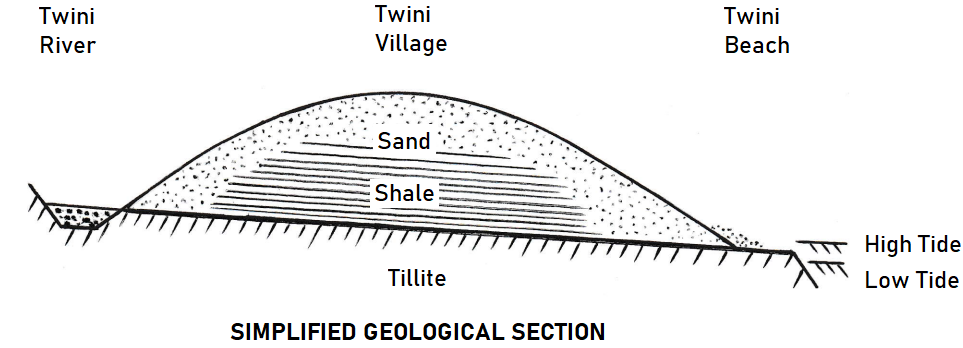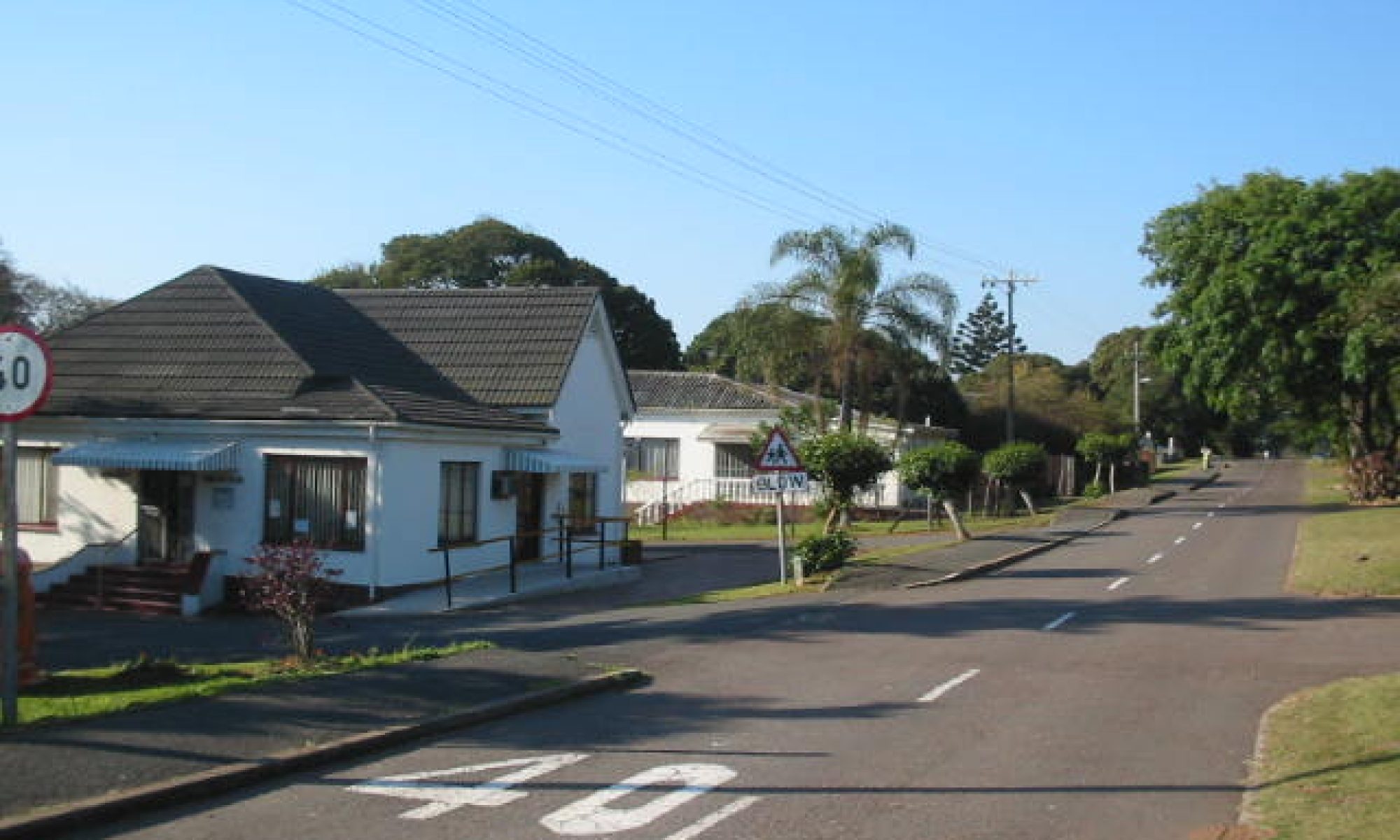Twini is located on an ancient sand dune subparalel to the coastline at between 80m and 90m above sea level. The material in the dune sand was laid down up to 2.5 million years ago and originally comprised four main components, i.e. well rounded quartz grains, shell fragments, some feldspar grains and iron–rich grains. The shell fragments were subsequently leached out with time, the feldspar weathered into clay and the iron rich grains ‘rusted’ to give the red colour that we know, also the name Berea Red Sand. It is this iron-rich clayey sand soil, together with the sub-tropical rainfall, that gives the luxuriant natural vegetation and good gardens. The Berea Red Sand is underlain by sedimentary Ecca Shale which was laid down approximately 300 million years ago and generally not visible in the village area. The shale is in turn underlain by the Dwyka Tillite formation from an ice age approximately 350 million years ago. The tillite is visible along the banks of the Twini River near the old road bridge crossing.

Beach rock is by comparison a very young rock formed where high shell concentrations have been ‘dumped’ close the shore line. I was amazed on one occasion at Twini beach to find a rusted penknife in solid shell beach rock, the leaching shells from the subtropical rainfall having formed the cement to ‘glue’ all the pieces together!
Another very modern ‘rock’ that I discovered was around a spring in the deep valley area near the factory’s Indian village. A large volume of crystal clear, but iron-rich, water exited from a vertical hole near the base of the steep slope. Rain water percolating down through the red sands carried the iron with it. The iron content on exposure to air rapidly hardened over all the leaf matter to form an ironstone with ‘fossil’ leaves.
